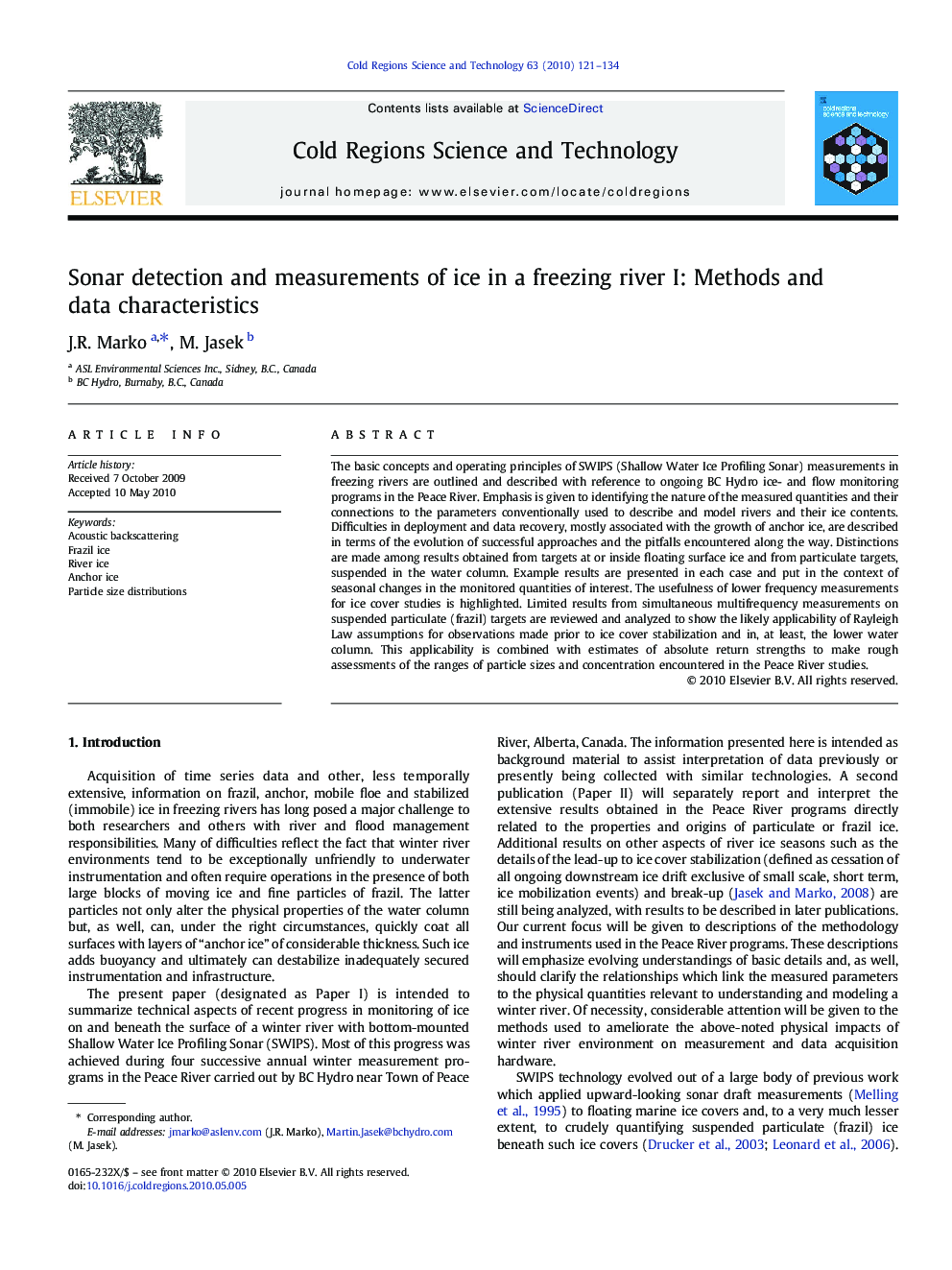| Article ID | Journal | Published Year | Pages | File Type |
|---|---|---|---|---|
| 4676183 | Cold Regions Science and Technology | 2010 | 14 Pages |
The basic concepts and operating principles of SWIPS (Shallow Water Ice Profiling Sonar) measurements in freezing rivers are outlined and described with reference to ongoing BC Hydro ice- and flow monitoring programs in the Peace River. Emphasis is given to identifying the nature of the measured quantities and their connections to the parameters conventionally used to describe and model rivers and their ice contents. Difficulties in deployment and data recovery, mostly associated with the growth of anchor ice, are described in terms of the evolution of successful approaches and the pitfalls encountered along the way. Distinctions are made among results obtained from targets at or inside floating surface ice and from particulate targets, suspended in the water column. Example results are presented in each case and put in the context of seasonal changes in the monitored quantities of interest. The usefulness of lower frequency measurements for ice cover studies is highlighted. Limited results from simultaneous multifrequency measurements on suspended particulate (frazil) targets are reviewed and analyzed to show the likely applicability of Rayleigh Law assumptions for observations made prior to ice cover stabilization and in, at least, the lower water column. This applicability is combined with estimates of absolute return strengths to make rough assessments of the ranges of particle sizes and concentration encountered in the Peace River studies.
